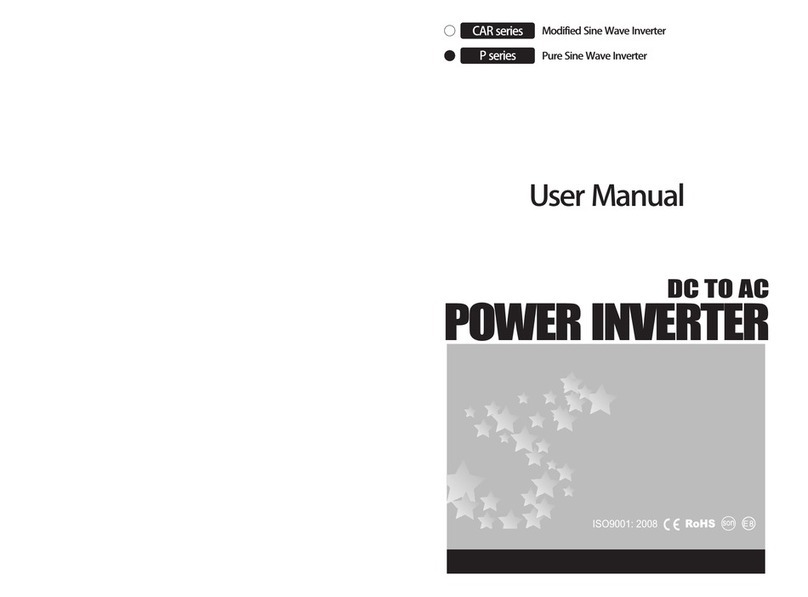
Lightweight folding solar charging kit – Instruction manual
|
8
Models: ARF-FWP-80M, ARF-FWP-100M, ARF-FWP-120M
4. Troubleshooting
Fault Possible
cause
Suggested solution
All LED
indicators
are OFF,
battery
connected
Fuse is blown
Check the fuse in the fuse holder at the
end of the battery cables of your kit and
replace if required.
Reverse
polarity
Battery has been connected with a
reversed polarity. Please check and
amend your connections.
Battery
voltage too
low
Measure battery voltage with a digital
multimeter. Min 10V is required for start-
up of the kit. If your battery is too low or
completely discharged, charge it first by
other means.
Battery power
not supplied
to controller
Battery power is not reaching the solar
charge controller for any other reason.
Please check the battery cables of your
kit for signs of damage. Pull-test any
cable joints (strongly) between the
controller and your battery:
- connections directly under the controller;
- attachment of cables to the plugs;
- fuse holder connection;
- attachment of cables to crocodile clips.
Green LED
permanently
ON, battery
connected
Not enough
solar power
Ensure there is no shading on the solar
panels. Check wiring between the
controller and solar panels for reverse
polarity, loose connections or fraying.
Yellow LED
OFF
Battery over
voltage
Using a digital multimeter check if the
battery voltage is higher than the over-
voltage disconnect point (15.5V), and if
confirmed, disconnect the solar kit.
Resolve the voltage problem if other
sources are charging the battery. If no
other sources, contact the supplier or
manufacturer of your kit for advice.
Yellow LED
flash
Battery is too
low / battery
is over-
discharged
Remove any loads or power drain on the
battery. Allow the solar charging kit
sufficient time to recharge the battery. If
this happens repeatedly, your battery may
be too small for your usage or have lost
capacity due to its use, and may have to
be replaced.





























